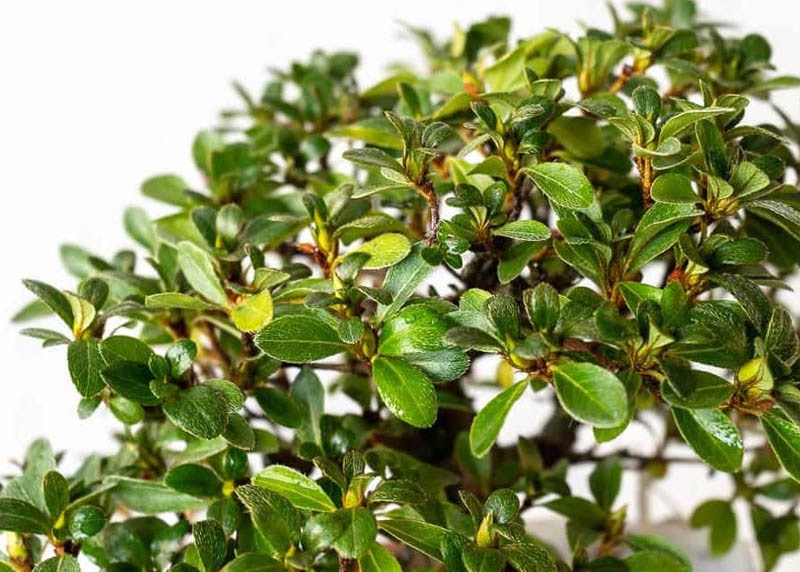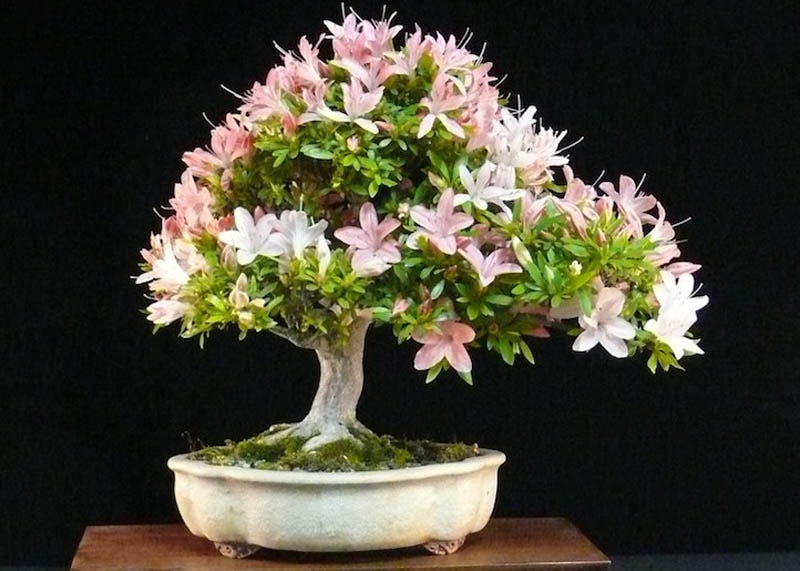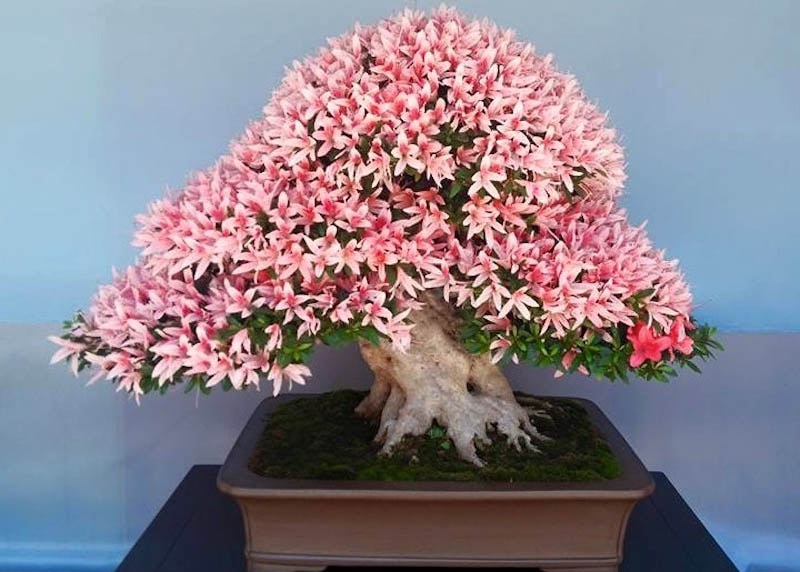Uncover the art of caring for Azalea Bonsai trees with this particular thorough tutorial.
No matter if you are a seasoned bonsai fanatic or simply a beginner, this short article addresses all components of Azalea Bonsai treatment, from placement and watering to fertilizing and repotting.
Find out how to generate the ideal setting in your Azalea Bonsai to thrive, together with furnishing the appropriate level of shade and humidity.
Check out techniques for example pruning and wiring to form and preserve your bonsai tree, and learn the very best soil and pot variety for Azalea Bonsai. With beneficial tips about propagation, coping with pests and ailments, and basic details about the Azalea Bonsai tree, this guidebook is your go-to source for cultivating an ideal Azalea Bonsai.
Placement
To ensure the health and vitality of one's azalea bonsai tree, it's important to look at its placement. Azaleas prosper in sunny spots, but in the course of the most well liked time from the working day in summertime, it is better to supply some shade. This will safeguard the tree from abnormal warmth and prevent the chance of sunburn. On top of that, when your azalea is in bloom, it should be shielded from significant rain and immediate sunlight, as this may cause the bouquets to fade and wilt prematurely. Last of all, during colder temperatures, it is vital to protect your azalea bonsai from frost and freezing temperatures. It is usually recommended to maintain the tree in a location wherever the temperature would not drop beneath 40°F (-5°C).
Watering
Correct watering is critical for the overall health and nicely-currently being of one's azalea bonsai tree. Azaleas usually do not want to totally dry out, but Additionally they do not tolerate extreme humidity. It is important to on a regular basis check the humidity degree of the soil within the bonsai pot. If your soil feels dry, it is possible to dunk the root ball inside of a bowl of h2o to be certain comprehensive dampness. Moreover, azaleas desire marginally acidic soil, so applying rainwater or a mixture of rainwater and faucet drinking water is ideal. If making use of tap drinking water, take into consideration filtering it to eliminate any impurities or abnormal minerals.

Fertilizing
Feeding your azalea bonsai with the appropriate fertilizer is essential for promoting healthy growth and abundant flowering. During the growing season, it is recommended to use a special azalea or rhododendron fertilizer. There are both liquid azalea fertilizers, which can be used weekly, as well as organic products that can be applied less frequently. It is important to reduce feeding during the flowering period to allow the tree to focus its energy on producing beautiful flowers. Adjusting the dosage or frequency of fertilizing during this time is beneficial.
Pruning and Wiring
Proper pruning and wiring techniques are necessary to maintain the desired shape and form of your azalea bonsai tree. Azaleas have a basally-dominant growth pattern, which means that the get more info lower branches grow stronger than the weaker top. This natural growth habit can result in a shrub-like appearance. To counterbalance this, it is advisable to prune the branches harder at the base than at the top, encouraging a more balanced and aesthetically pleasing structure.
After flowering, it is important to remove any wilted flowers and ovaries. This timing is also ideal for other pruning and trimming tasks, as it allows the new flower buds for the next year to develop. Unwanted shoots from the trunk or branches can be removed at any time of the year. However, it is important to note that azalea wood is brittle and prone to breaking, so care must be taken when wiring and bending branches.

Repotting
Repotting is an essential part of bonsai tree care, as it allows for the renewal of soil and the maintenance of root health. Azalea bonsai trees should be repotted every two years, either in spring or after flowering. When repotting, it is important to carefully prune the thin and matted roots to prevent them from becoming tangled or damaged. Using a lime-free soil, such as Pure Kanuma, is recommended for azaleas. This specific soil type provides the appropriate pH balance and nutrient content to support the tree's growth and development.
Propagation
If you wish to propagate your azalea bonsai tree, the most common method is through cuttings. Cuttings can be taken in the spring or summer, depending on the cultivar. The success rate of propagation varies depending on the specific cultivar, but many popular varieties root easily and quickly. To protect young cuttings from excessive evaporation, transparent sheets can be used during the hot months.

Pests and Diseases
Like any plant, azalea bonsai trees can be susceptible to pests and diseases. Spider mites are a common issue, especially in low humidity environments. It is important to address any spider mite infestations promptly by treating them with a suitable pesticide and improving humidity levels. Vine weevils can also be a problem, as they can eat the leaves and their grubs can cause damage to the roots. Special pesticides or nematodes can be used to eliminate vine weevils and their larvae.
To prevent root rot, which is caused by a fungus, it is important to ensure that the soil is not too wet or compacted. Fungicides can be used to treat root rot effectively. Leaf galls can also occur, particularly in cultivars with plain-colored red and purple flowers. To handle this disease, it is best to remove the galls as soon as they are discovered and protect the azalea from excessive rain.
General Information
Azalea bonsai trees are known for their spectacular flowering, which typically occurs in late spring. The flowers come in a variety of colors, shapes, sizes, and patterns, making them a visually stunning addition to any bonsai collection.
To ensure abundant flowering, it is important to time your pruning and fertilizing correctly. Azalea bonsai trees have dark green leaves that vary in size and shape depending on the cultivar. Satsuki and Kurume azaleas are popular choices for bonsai, as they are evergreen and can be kept outdoors. It is worth noting that as azalea bonsai trees age, their branches can become brittle, so it is important to handle them with care.

FAQs
- How big do azalea bonsai trees get? Azalea bonsai trees can vary in size depending on the specific cultivar and how they are cared for. On average, they range from around 6 inches to 18 inches in height.
- Is really an azalea bonsai an indoor plant? When azalea bonsai trees may be retained indoors briefly for display applications, they often choose to be stored outdoor wherever they might get proper sunlight and airflow.
- How much time do azalea bonsai trees Dwell? With right treatment, azalea bonsai trees can live for a few years. Some azaleas are known to Dwell for many years when specified the right situations and care.
- Wherever should I spot my azalea bonsai? Azalea bonsai trees prosper in sunny places with a few shade during the hottest Portion of the day. They should also be protected from significant rain and Intense temperatures.
- How much time does azalea bonsai last? The lifespan of an azalea bonsai tree can differ determined by various factors such as care, surroundings, and genetics. With appropriate care, they will live for many years and supply pleasure all over their lifespan.
- Do azaleas make superior bonsai? Sure, azaleas make exceptional bonsai trees. Their lively bouquets, dim environmentally friendly foliage, and natural growth styles make them a visually putting option for bonsai fans.
- Can azalea bonsai improve indoors? When azalea bonsai trees may be held indoors briefly, they often choose to be retained outside where by they could acquire the proper daylight, airflow, and humidity levels.
- How much time do azalea bonsai Dwell? The lifespan of the azalea bonsai tree may vary depending on various elements. With proper treatment, they're able to Reside for many years and supply satisfaction through their lifespan.
- How would you take care of an azalea bonsai plant? Caring for an azalea bonsai plant includes delivering the suitable daylight, watering, fertilizing, pruning, and security from pests and diseases. Following the precise care tips outlined in this article will aid make sure the wellness and vitality of your azalea bonsai tree.
Models and Approaches
Azalea bonsai trees may be styled and formed employing a range of approaches and types. Some well-liked variations and approaches for azalea bonsai consist of:
- Cascade: This type requires the tree cascading down from its container, developing a graceful and flowing overall look.
- Pruning: Pruning is essential for retaining the specified form and sort of the azalea bonsai tree. It can help advertise healthful expansion in addition to a balanced structure.
- Shohin: Shohin is a style of bonsai that refers to little-sized trees. Azaleas could be trained With this design, creating a compact and delicate visual appearance.
- Rhododendron: Azaleas belong on the rhododendron genus, as well as their pure growth patterns might be accentuated and Improved in bonsai type.
- Indoor: While azalea bonsai trees are typically kept outdoor, they can be briefly displayed indoors for brief periods. Nevertheless, it can be crucial to provide them with the appropriate lighting and treatment through this time.
- Flowering: Azaleas are renowned for their gorgeous and vibrant flowers. Styling strategies can assist showcase and increase the tree's flowering capabilities.
- Purple: Azaleas arrive in many different hues, such as shades of purple. These exclusive colors could be highlighted and emphasised in styling efforts.
- Aged: The appearance of the old and experienced tree could be obtained through styling methods for instance using aged-hunting containers, creating a weathered and majestic look.
- Japonica: The japonica range of azaleas is a popular option for bonsai as a consequence of its purely natural progress routines, small dimension, and exquisite flowers.
- Root above rock: This system involves teaching the tree's roots to improve above a rock or other construction, producing an interesting and visually attractive Exhibit.
- Nursery stock: Azalea bonsai trees can be started from nursery inventory, that's available and will be formed and experienced to make exceptional and attention-grabbing models.
- Pink: Pink-flowering azaleas can include a delicate and feminine contact to the bonsai assortment. Styling strategies can boost and highlight these delicate colors.
- Tree: The tree type can be a typical and timeless choice for bonsai. Azaleas may be skilled and styled to resemble miniature versions of full-sized trees, developing a visually striking display.
- Australia: In Australia, azaleas are well-liked options for bonsai because of their adaptability to varied climates and their capacity to thrive in out of doors settings.
- Clump: Clump-style azalea bonsai trees aspect various trunks developing intently together, making a dense and visually attractive composition.
- Windswept: The windswept design and style mimics the consequences of wind and climate over a tree, making a special and dynamic visual appeal.
- Compact: Azaleas are naturally compact and little in dimensions, making them a really perfect option for little-sized bonsai trees.
- Outdoor: Azalea bonsai trees are usually saved outside, the place they will acquire the right daylight, airflow, and temperature fluctuations essential for their progress and progress.
- Saotome: The saotome model consists of creating a solitary, elongated trunk with branches that step by step taper off, developing a sense of movement and harmony.
- Kurume: Kurume azaleas are a variety of azalea that originated in Japan. They are well-liked choices for bonsai due to their smaller dimension and lively bouquets.
- Yellow: Yellow-flowering azaleas can increase a vivid and cheerful touch on your bonsai selection. Styling techniques can boost and emphasize these vivid colours.
- Forest: The forest design will involve creating a grouping of trees, with Every single particular person tree serving being a ingredient of a larger composition. Azaleas can be utilized to build visually stunning forest-design bonsai shows.
- Semi-cascade: Semi-cascade bonsai trees aspect a trunk that cascades partly around the sting with the container, developing a dynamic and visually appealing arrangement.
- Trunk: The trunk of an azalea bonsai tree is often an important focus. Styling tactics can accentuate and spotlight the exclusive attributes and functions in the trunk.
- Massive: Though azalea bonsai trees are naturally little and compact, they may be skilled and styled to build the looks of a larger and much more mature tree.
- Proflowers: Proflowers is often a effectively-regarded on the web retailer which offers a range of bonsai trees, which include azaleas. They supply a handy choice for buying and including azalea bonsai trees to the selection.
- Mame: Mame is a form of bonsai that refers to quite tiny trees. Azaleas is often trained During this style, creating a miniature and sensitive physical appearance.
- Plant: Azalea bonsai trees are living crops that have to have treatment and a focus to thrive. By giving the proper situations and pursuing acceptable care pointers, you'll be able to enjoy the magnificence and magnificence of these stunning trees.
Throughout the numerous types and tactics readily available, you may develop a exceptional and personalized azalea bonsai tree that demonstrates your individual artistic vision and aesthetic Choices. Experimenting with distinctive designs and strategies can be a worthwhile and inventive journey on the globe of bonsai cultivation.
